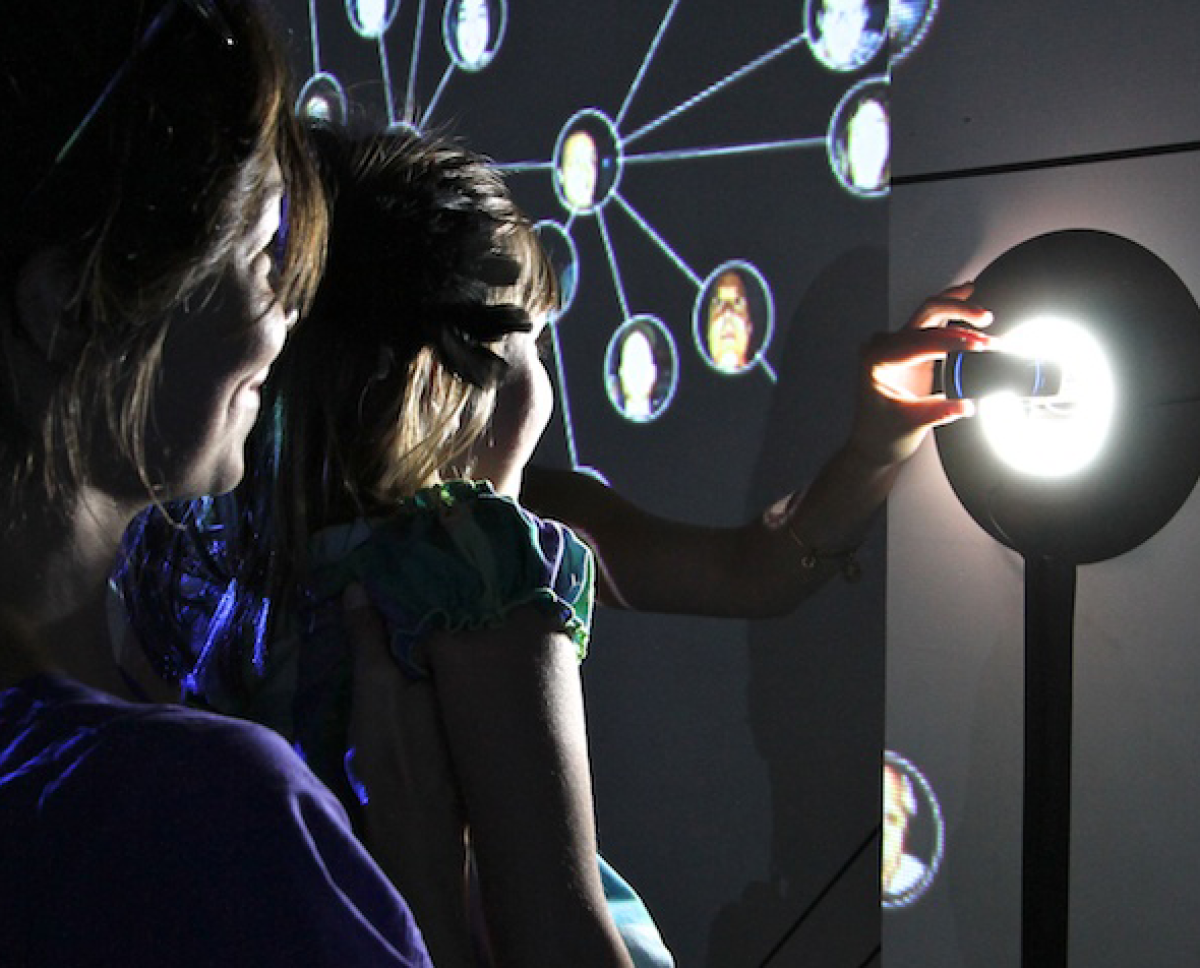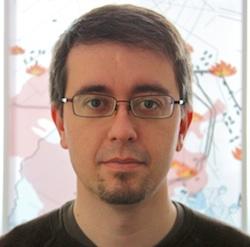Commitment to Open-Source Arts

You don't need to go to Brazil, Singapore, or Finland to enjoy Chris Coleman's creative work. Although he has created art installations around the world, much of his digital work can be accessed online.
"I like how shareable and democratic digital art can be. People do not need access to galleries or museums to enjoy much of my work," said Coleman, a professor in the Emergent Digital Practices program, whose interests include creative coding and the open-source arts community.
Early in his DU career, Coleman co-developed a translator software project, Maxuino, for a class. Figuring others may want to use it, he made it available through open source in 2009. Since then, "it has been downloaded almost 100,000 times by people in dozens of countries," he said. Maxuino allows users of Cycling '74 Max, a visual programming tool, to add their own inputs and outputs to their computer without learning a separate programming language.
"It is free for anyone who wants to use it, and all the code that goes into it is open source, meaning you can see, replicate, and change it," he added. "At any time someone can download it and make a new or very different tool building on what I made. This is the beauty of open source."
Coleman is committed to creating a healthy and inclusive community around free and open-source digital tools for artists, which allow anyone with access to a computer to be creative with digital technology. He recently received a $150,000 grant from the Knight Foundation and support from the Center for Innovation in the Liberal and Creative Arts to establish the Clinic for Open-Source Arts (COSA) at the University of Denver. The Knight grant will provide funding for the first two years.
"We as institutions need to do more to support the communities our students will join during their time in school as well as afterward. More importantly, at institutions, we are highly privileged, unlike the millions of digital creatives around the world who rely on free and open-source tools as the only way to express themselves," said Coleman. He hopes to create better processes and structures to make tools more sustainable.
"There is nothing worse than a great tool that suddenly disappears or breaks and the thousands of users left searching for something new," he added. "We want to make sure everyone feels invited to become a contributor to their tools and together create a healthier ecosystem and community around any given tool."
Coleman has an MFA from State University of New York at Buffalo, and a BFA in sculpture from West Virginia University where he also studied mechanical engineering.
"The knowledge I gained in electro mechanics, 3D modeling, electronics, and more give me a leg up in being able to create complex interactive art projects," he said. "As a professor, I try to distill some of that knowledge in order to give my students the same comfort in using mechanical systems in their work."
Coleman's creative work includes sculptures, videos, and interactive installations. He finds inspiration by reading, listening, and observing the world around him.
"Many times there are things that I really care about, major issues I want to 'say' something about, that force me to research and really understand the problem and ways to fix it," he said. "From that I might come up with dozens of ways to express those ideas in many mediums, but my task is to figure out the best way to share it with the public that takes into account every aspect of the work, from the color of the screw to the sound that accompanies a gentle moment in a video."
His art installations are often designed to be reactive and, in fact, require visitors to become activated. A feedback system helps visitors understand the ideas in the work.
As a professor, Coleman has been preparing students for careers in a multitude of fields involving creativity and digital tools.
"Our students really do go on to do just about everything, and we are a popular second major as this generation sees the value of having digital skills and good creative problem solving for all their careers," said Coleman. "I just want students to know how to keep learning, to be confident enough to try new things, and to be excited by the things they create, whether it is for a gallery or a boardroom."
View some of Coleman's featured work at http://www.digitalcoleman.com/








